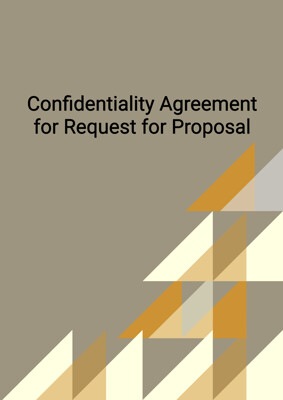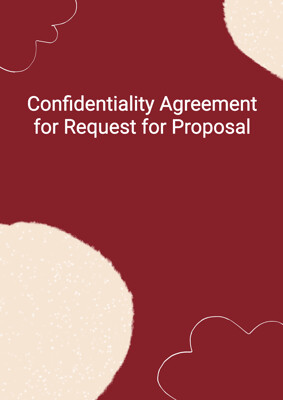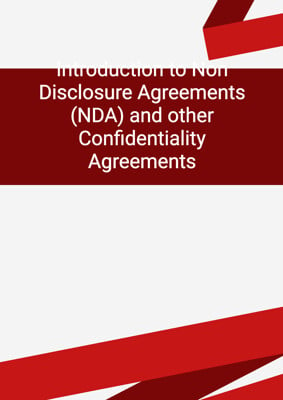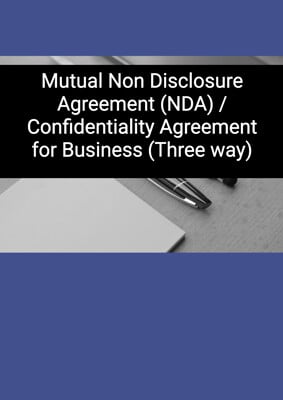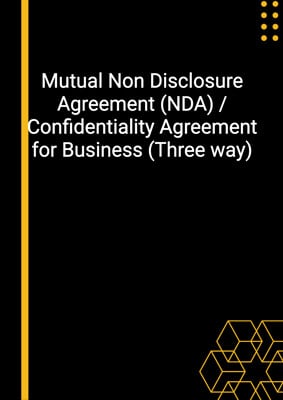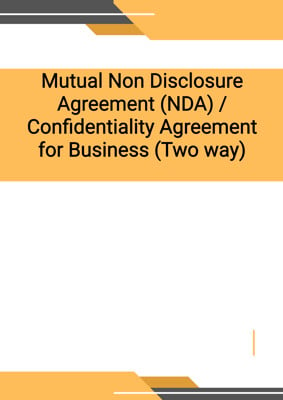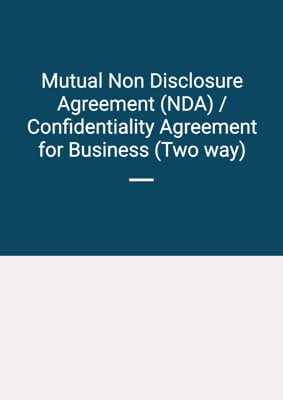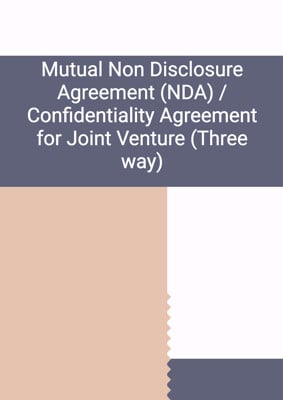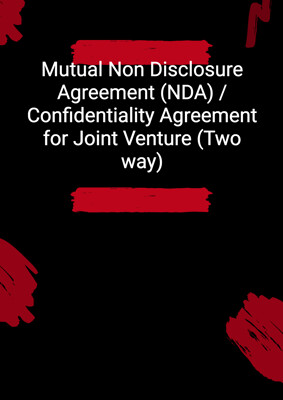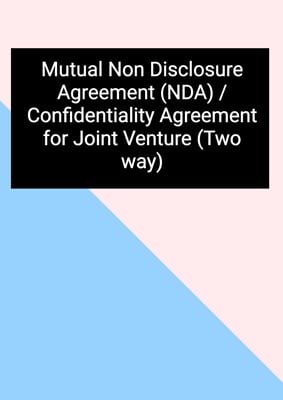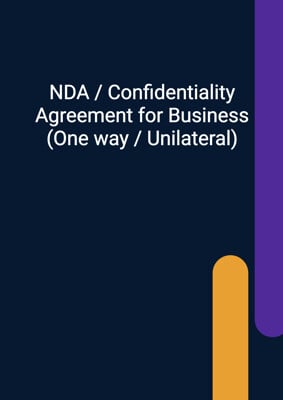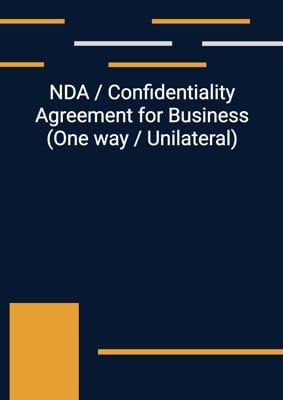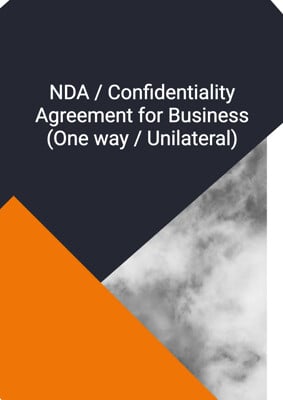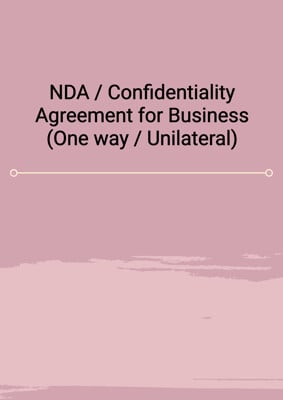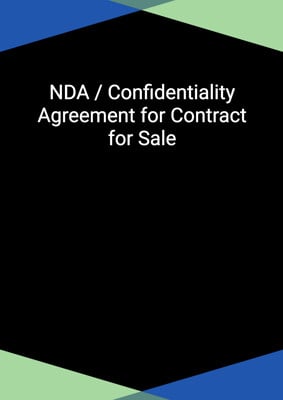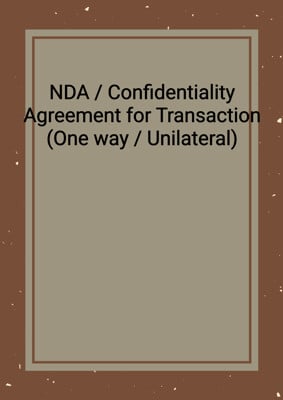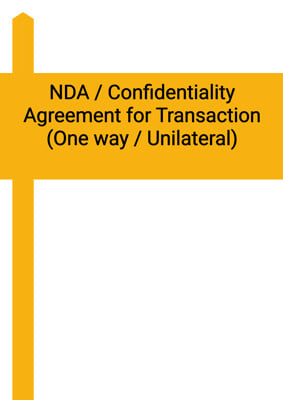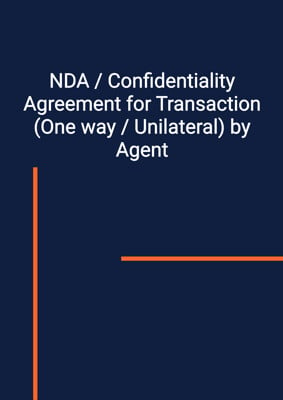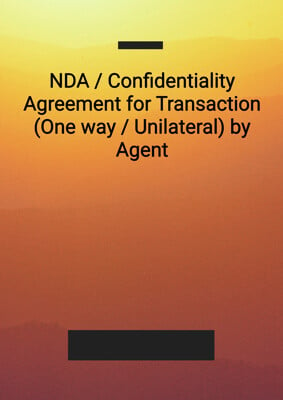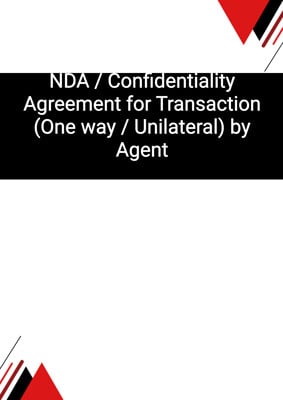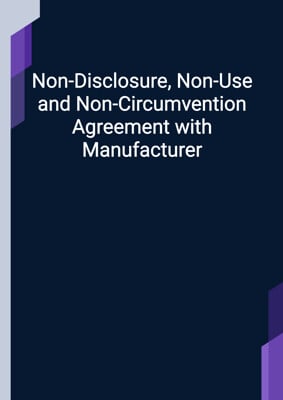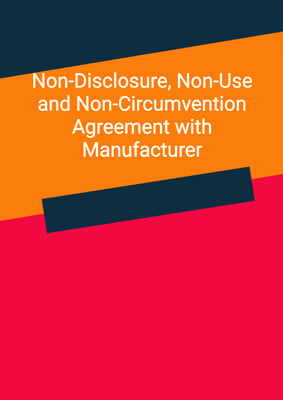
Mutual Non Disclosure Agreement (NDA) / Confidentiality Agreement for Joint Venture (Two way)
Neutral
Non Disclosure agreement for a basic information exchange agreement applicable where two parties are agreeing to exchange confidential information before concluding a binding joint venture agreement. It imposes a mutual obligation of confidentiality on the parties who provide and receive information at the same time. This is drafted in neutral form.
How to Tailor the Document for Your Need?
01
Create Document
Fill in the details of the parties. You can click the "Fill with Member’s Information" button to complete it with information saved to your account.
02
Fill Information
Please fill in any additional information by following the step-by-step guide on the left hand side of the preview document and click the "Next" button.
03
Get Document
When you are done, click the "Get Document" button and you can download the document in Word or PDF format.
04
Review Document
Please get all parties to review the document carefully and make any final modifications to ensure that the details are correct before signing the document.
Document Preview
Document Description
The Mutual Non Disclosure Agreement (NDA) / Confidentiality Agreement for Joint Venture (Two way) is a document that establishes the terms and conditions for the exchange of confidential information between two parties, Party 1 and Party 2, for the purpose of evaluating a possible joint venture in the field of transaction between them. The agreement begins with a brief introduction, highlighting the mutual benefit of exchanging and further exchanging confidential information.
The document consists of several sections, each addressing different aspects of the agreement. The first section provides definitions for key terms used throughout the agreement, such as 'approved representatives', 'associate', 'group', 'holding company', 'subsidiary', and 'information'. These definitions ensure clarity and understanding of the terms used in the agreement.
The second section outlines the obligations of confidentiality that both parties undertake in relation to each other's information. These obligations include keeping the information confidential, using it exclusively for the purpose stated in the agreement, not copying or reproducing the information without permission, not using or storing the information in an externally accessible computer system, and not transmitting the information outside of the usual place of business.
The third section focuses on the confidentiality measures that each party must take to ensure the protection of the disclosed information. These measures include limiting the disclosure of information to approved representatives who require access for the purpose, keeping the information separate from other documents and records, applying adequate security measures, keeping a written record of the information received and its handling, and restricting the removal of information from the premises without prior approval.
The fourth section addresses exceptions to the confidentiality obligations. It states that the obligations do not apply to information that is publicly available, previously known to the receiving party, disclosed by a third party with the right to do so, or independently developed by the receiving party. It also allows for disclosure of information if required by law or regulatory authorities, provided that the other party is informed and reasonable efforts are made to agree on the extent and timing of the disclosure.
The fifth section covers the return of information. It states that upon request, each party must return or destroy all documents and materials containing the information. If removal or destruction is not practicable, steps must be taken to secure the information to prevent future access or copying.
The sixth section includes a disclaimer and warranty. It clarifies that no rights or obligations other than those expressly granted in the agreement are implied, and no license is granted for any intellectual property rights. It also states that the agreement does not obligate either party to enter into the business relationship contemplated by the purpose and warrants the right to disclose and use the information.
The seventh section addresses announcements and requires both parties to keep the existence and nature of the agreement confidential. Any announcement or circular relating to the agreement must be approved by both parties.
The eighth section discusses remedies for breach of the agreement. It acknowledges that damages may not be an adequate remedy and allows for remedies such as injunction and specific performance. It also states that no proof of special damages is necessary to enforce the agreement.
The ninth section covers waiver, stating that waiver of a failure to perform one provision does not waive other failures. It also clarifies that the rights, powers, and remedies provided in the agreement are cumulative and not exclusive.
The tenth section prohibits the assignment of rights or obligations under the agreement by either party.
The eleventh section states that the agreement constitutes the entire agreement between the parties and supersedes any previous representations or warranties. It allows for claims in contract for breach of warranty but limits liability for misrepresentation or untrue statements not included in the agreement.
The twelfth section addresses rights under contracts for third parties, stating that only connected persons have the right to enforce the terms of the agreement, subject to the governing law and jurisdiction clause.
The thirteenth section specifies the governing law and jurisdiction for the agreement.
The fourteenth section provides instructions for giving notices and service, including the methods of delivery and the addresses of the parties.
The agreement concludes with the signatures of the duly authorized representatives of Party 1 and Party 2, along with the date of signing.
Overall, this Mutual Non Disclosure Agreement (NDA) / Confidentiality Agreement for Joint Venture (Two way) is a comprehensive document that establishes the terms and conditions for the exchange of confidential information between Party 1 and Party 2 for the purpose of evaluating a possible joint venture. It ensures the protection of the disclosed information and provides remedies for breach of the agreement.
How to use this document?
To use the Mutual Non Disclosure Agreement (NDA) / Confidentiality Agreement for Joint Venture (Two way), follow these steps:
1. Provide information: Enter the names and principal places of business of Party 1 and Party 2 in the agreement. This ensures that both parties are clearly identified.
2. Evaluate the purpose: Determine the purpose of the agreement, which is the evaluation of a possible joint venture in the field of transaction between Party 1 and Party 2. This sets the context for the exchange of confidential information.
3. Understand definitions: Familiarize yourself with the definitions provided in the agreement, such as 'approved representatives', 'associate', 'group', 'holding company', 'subsidiary', and 'information'. This will help you understand the terms used throughout the agreement.
4. Review obligations of confidentiality: Read and understand the obligations of confidentiality outlined in the agreement. These obligations include keeping the information confidential, using it exclusively for the purpose stated in the agreement, and not copying or reproducing the information without permission.
5. Implement confidentiality measures: Take the necessary steps to ensure the confidentiality of the disclosed information. This includes limiting disclosure to approved representatives, keeping the information separate from other documents and records, and applying adequate security measures.
6. Be aware of exceptions: Understand the exceptions to the confidentiality obligations, such as information that is publicly available or previously known to the receiving party. Be prepared to handle situations where disclosure of information is required by law or regulatory authorities.
7. Prepare for the return of information: Be ready to return or destroy all documents and materials containing the information upon request. If removal or destruction is not practicable, take steps to secure the information to prevent future access or copying.
8. Consider the disclaimer and warranty: Take note of the disclaimer and warranty provided in the agreement. Understand that no rights or obligations other than those expressly granted are implied, and no license is granted for any intellectual property rights.
9. Maintain confidentiality: Keep the existence and nature of the agreement confidential. Seek approval from both parties before making any announcements or circulars related to the agreement.
10. Understand remedies for breach: Be aware of the remedies available for breach of the agreement, such as injunction and specific performance. Understand that no proof of special damages is necessary to enforce the agreement.
11. Comply with notice and service requirements: Follow the instructions for giving notices and service as outlined in the agreement. Use the specified methods of delivery and ensure that notices are sent to the correct addresses.
By following these steps, you can effectively use the Mutual Non Disclosure Agreement (NDA) / Confidentiality Agreement for Joint Venture (Two way) to protect confidential information and evaluate a possible joint venture between Party 1 and Party 2.
Not the right document?
Don’t worry, we have thousands of documents for you to choose from:

